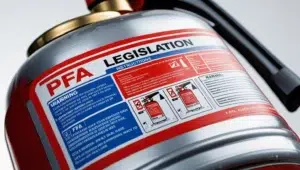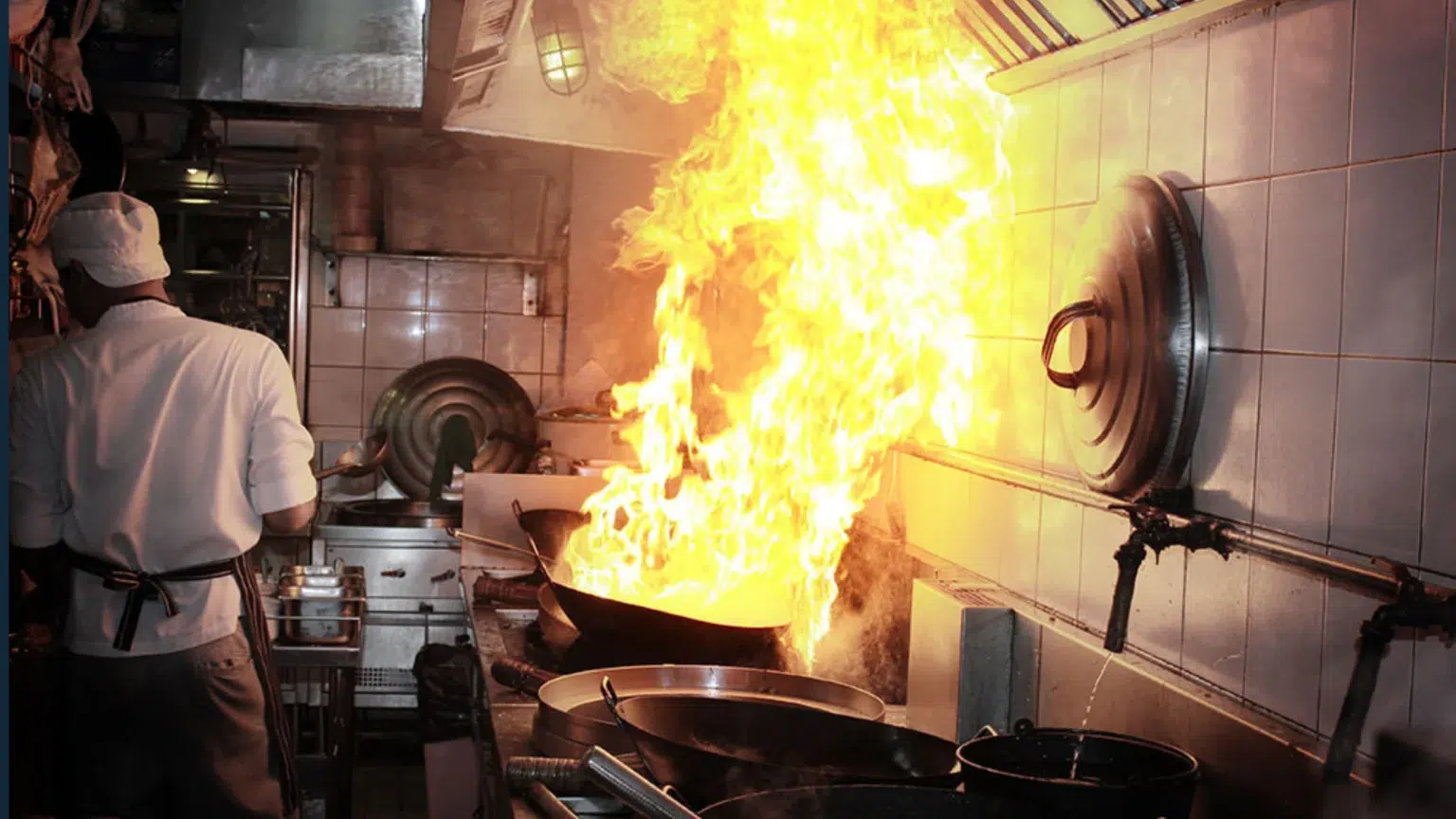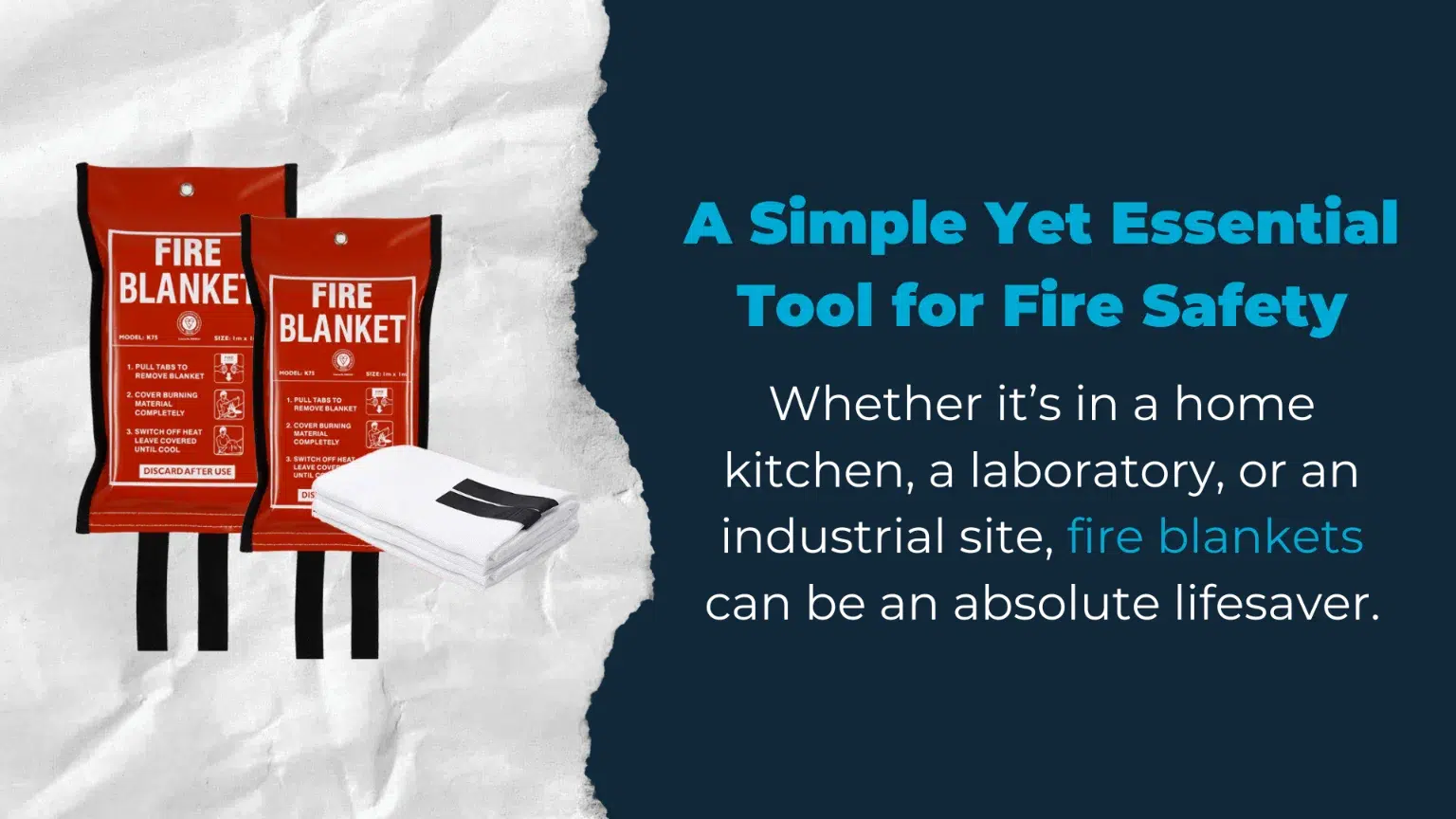
PFA Legislation – Foam fire extinguishers
Only foam extinguishers containing PFOA are banned. Many foam extinguishers manufactured post2016 are already PFOA-free, or contain alternative PFAS like C6, which are still legal.
Book your FREE, no-strings-attached Fire Safety Audit to ensure that you’re properly protected from the risk and comply with current fire safety legislation.
Get essential insights and updates
in fire safety – straight to your inbox!
When we think about fire safety, things like fire extinguishers, smoke alarms, and sprinkler systems usually come to mind. But there’s one tool that’s often forgotten—the fire blanket. It’s simple, compact, and incredibly effective at handling small fires. Whether it’s in a home kitchen, a laboratory, or an industrial site, fire blankets can be an absolute lifesaver. In this guide, we’ll look at what fire blankets are, how they work, and why they’re an essential part of any fire safety kit.

A fire blanket is a specially made sheet of fire-resistant material like fiberglass or Kevlar. It’s designed to smother small fires by cutting off their oxygen supply. Without oxygen, the fire can’t burn. Fire blankets come in different sizes, and they’re usually stored in easy-to-reach containers so they can be deployed quickly if needed. The best part is that anyone can use a fire blanket—even if you don’t have specialized training. They’re as straightforward as it gets.

To understand how a fire blanket works, it helps to know a little about the fire triangle. Fires need three things to keep going: heat, fuel, and oxygen. A fire blanket stops the fire by cutting off the oxygen. When you throw a fire blanket over a small fire, it forms a seal that blocks out oxygen, which effectively puts the fire out.
The materials used in fire blankets are built to handle high temperatures, so they don’t catch fire or melt easily. They’re particularly good for kitchen fires involving cooking oils or fats, which can be dangerous to put out with water. Fire blankets can also be used if someone’s clothing catches fire—they help extinguish the flames and prevent further injury.
Using a fire blanket is simple, but it’s important to do it properly for it to work effectively. Here’s how:
Fire blankets and fire extinguishers serve different purposes, but they work well together as part of a fire safety strategy. Fire blankets are ideal for grease fires, clothing fires, and small localized fires, while extinguishers are more versatile and better suited for larger fires. Having both on hand ensures you’re ready to tackle a variety of fire emergencies.
Fire blankets might seem simple, but they’re a crucial part of any fire safety plan. They’re easy to use, affordable, and perfect for specific types of fires, making them especially valuable in kitchens, labs, and industrial settings. By having a fire blanket on hand and knowing how to use it, you could save not only your property but also lives.

Only foam extinguishers containing PFOA are banned. Many foam extinguishers manufactured post2016 are already PFOA-free, or contain alternative PFAS like C6, which are still legal.

Fire alarm monitoring in the UK is facing major changes due to the phase-out of traditional communication networks and providers. Analogue phone lines (PSTN) are being switched off by December

In industrial environments, safety is more than a priority—it’s a responsibility. Yet, one of the most dangerous threats to worker health is often invisible, odorless, and too often overlooked: carbon
Video Smoke Detection is perfect for a fast response to fires in high roofed buildings and harsh operating conditions.
Watch Smokecatcher detect smoke in an MSW storage building. The smoke is coming through from a fire in the adjoining storage area.
Watch Smokecatcher detect a fire in an SRF Storage bunker. Sadly, the alarm wasn’t responded to and the site lost a 4hr window of opportunity between smoke detection and flames appearing.
Video Smoke Detection overcomes the risks of stratification and other challenges for early fire detection in logistics and storage facilities.
Watch Fire Rover detect and suppress a fire in the waste bunker at an EFW facility!
See how the Fire Rover detects and suppresses this fire at a clients tipping hall. Note how the smok is spreading out at low leve, rather than rising. This is called ‘stratification’ and is one of the many reasons why roof-mounted smoke detection systems like beam detectors and HSSD is not suitable for many recycling applications.
Watch the Fire Rover detect and suppress a fire at a battery storage facility. This targeted and intellegent control makes the Fire Rover particularly well suited to high hazard storage applications.
Watch the Fire Rover tackle a battery fire in a tipping hall. Note how the exploding battery cells start three separate fires, which the operator individually suppresses (whilst avoiding the site operators in the vicinity).
Get essential insights and updates in fire safety – straight to your inbox!